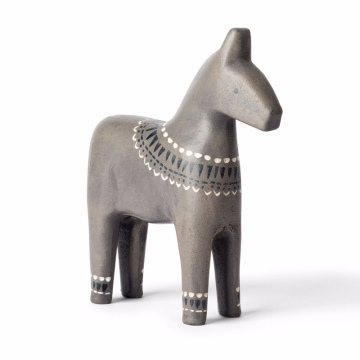Introduction to Italian Cuisine in Spain
The historical ties between Italy and Spain have greatly influenced the culinary landscapes of both nations. As trade routes expanded during the Renaissance, so did the exchange of food traditions, paving the way for a unique integration of flavors and techniques across Mediterranean borders. Italian cuisine, characterized by its emphasis on fresh ingredients, simple recipes, and a variety of pastas, has found a welcoming home in Spain, where culinary creativity thrives.
Pasta, a staple of Italian gastronomy, has gained considerable popularity among Spanish consumers, showcasing its versatility and adaptability. As Spanish chefs embrace this Italian classic, they often experiment with local ingredients, integrating elements of traditional Spanish cooking. This fusion creates a culinary experience that highlights both the unmistakable essence of Italian dishes and the rich flavors cherished in Spanish cuisine. Signature dishes such as spaghetti al pomodoro begin to appear on menus alongside regional specialties like paella, illustrating the ongoing dialogue between these two rich gastronomies.
In recent years, the rise of Italian restaurants has mirrored Spain's interest in Italian culinary traditions. Urban areas such as Barcelona and Madrid now boast a melting pot of dining options, where authentic Italian cuisine coexists with contemporary twists reflecting Spanish influences. Bartenders and chefs alike have joined the movement, crafting dishes that marry Italian cooking methods with local produce and spices.
This trend not only indicates a growing appreciation for Italian food among Spaniards but also illustrates the potential for culinary innovation. As we delve deeper into this blog, we will explore some of the top locations where food lovers can savor the harmonious blend of Spanish and Italian flavors, highlighting the best pasta dishes and restaurant experiences that both cultures have to offer.
Top Cities in Spain for Italian Food
Spain is a vibrant landscape renowned for its culinary diversity, and within this rich tapestry, Italian cuisine holds a charming position. Some of the top cities in Spain that cater to Italian food enthusiasts include Barcelona, Madrid, Valencia, and Seville, each offering unique interpretations and experiences of traditional Italian dining.
In Barcelona, the Gràcia district stands out for its eclectic atmosphere and a plethora of Italian restaurants. Here, one can find establishments such as Pizzeria da Nanni, where the focus is on artisanal pizza created with fresh ingredients and authentic techniques. Visitors should not miss the opportunity to try the classic Margherita pizza and creamy burrata, both of which reflect the heart of Italian culinary tradition.
Moving to Madrid, the Chamberí neighborhood offers a range of Italian dining options that combine traditional recipes with a modern twist. Restaurants like Trattoria Sant Arcangelo are celebrated for dishes like handmade pasta and classic tiramisu. The warm ambiance in these eateries complements the tasty offerings, making it a perfect spot for family dinners or intimate meals.
Valencia is another city that showcases impressive Italian culinary experiences. The Ruzafa area is famous for its vibrant nightlife and dining culture, featuring restaurants such as Il Tocco, which specializes in rich risottos and delectable lasagna. The incorporation of local ingredients into Italian recipes sets Ruzafa’s Italian eateries apart, offering a unique fusion of flavors.
Finally, Seville enchants with its historic charm and hospitality. The Alameda de Hércules district is home to cozy Italian spots, including La Piazzetta, known for its generous portions and outstanding pasta dishes. Diners can indulge in options like spaghetti carbonara or ravioli stuffed with seasonal vegetables, reconnecting with the essence of Italian gastronomy.
Each of these cities not only serves delicious Italian cuisine but also fosters an appreciation for the cultural exchange that occurs through food. Discovering these culinary gems invites an exploration of flavors that enrich the dining experience in Spain.
Authentic Italian Restaurants to Visit
Spain is home to a vibrant culinary scene, and among its diverse offerings, Italian cuisine holds a special place. For food lovers seeking authentic Italian pasta dishes, the following restaurants are must-visit destinations that provide a delightful experience reflecting both Italian tradition and local influence.
One standout establishment is Trattoria Pizzeria Da Michele located in Barcelona. Renowned for its classic Neapolitan pizza and homemade pasta, this restaurant emphasizes Chef Michele's philosophy of using local, organic ingredients. Signature dishes such as the *Spaghetti alle Vongole* and *Pasta al Pomodoro* have garnered acclaim, earning the restaurant several awards, including recognition from the prestigious Michelin Guide. The relaxed ambiance, with wooden beams and rustic decor, evokes a traditional Italian setting, making it a favorite among locals and tourists alike.
Another noteworthy mention is Ouh Babbo in Madrid, celebrated for its modern twist on Italian classics. Headed by Chef Francesco, who merges traditional techniques with contemporary flavors, the restaurant's *Pappardelle al Cinghiale* (wild boar) stands out as a signature dish. With an elegant yet welcoming atmosphere, Ouh Babbo has been lauded for its wine pairings and vibrant decor, creating an immersive dining experience that transports guests straight to Italy.
In Valencia, La Piazzetta offers a cozy respite that features a menu rich in authentic Italian dishes inspired by local ingredients. The chef’s commitment to sustainability is evident in his *Ravioli di Ricotta* filled with regional cheeses and herbs. Complemented by its charming terrace, the restaurant not only entices guests with delicious food but also fosters an inviting ambiance that enhances the overall dining experience.
These restaurants exemplify the best of Italian dining in Spain. As food enthusiasts seek to explore authentic pasta menus, visiting these establishments will undoubtedly offer an unforgettable gastronomic journey that combines both Italian heritage and Spanish influences.
Pasta Festivals and Italian Food Events in Spain
Pasta holds a special place in the culinary landscape of Spain, celebrated through various festivals and events that honor Italian culture. One of the most notable events is the "Festa della Pasta," which takes place annually in the picturesque city of Valencia. Held in April, this vibrant festival features a plethora of pasta dishes, cooking demonstrations, and tastings by renowned chefs, making it a must-visit for food enthusiasts. Attendees can indulge in traditional Italian pasta recipes while also exploring innovative creations that showcase a fusion of Italian and Spanish flavors.
Moving on to Barcelona, the city hosts the "Italian Food Festival" every June, celebrating the rich culinary traditions of Italy. This event brings together local restaurants and chefs who showcase their finest pasta dishes and other Italian specialties. Visitors can participate in cooking workshops, where they learn to prepare authentic pasta from scratch, allowing them to appreciate the skill and craftsmanship involved in creating this beloved dish. The festival not only promotes Italian cuisine but also cultivates a sense of community among food lovers from diverse backgrounds.
In the town of Málaga, the "Sagra della Pasta" is celebrated in September, drawing pasta aficionados from all around. This festival features live music, art exhibitions, and cultural activities alongside an impressive lineup of food stalls that offer various pasta dishes. Attendees enjoy a festive atmosphere while learning about the history and cultural significance of pasta in both Italy and Spain. These gatherings serve not only to celebrate the culinary arts but also to strengthen social ties among attendees, bridging cultural gaps through a shared love of food. Through these annual events, communities in Spain continue to keep Italian culinary traditions alive, ensuring that pasta remains an integral part of the gastronomic landscape.








